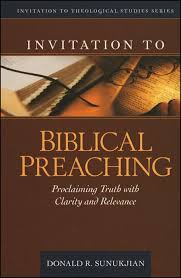An Assumption of Truths
“What truths must be assumed to practice theology (the study of God)?”
The writers answer to the aforementioned question is this; three truths must be assumed to study theology: the practicality of logic, the existence of a Greater Being, and the necessity of faith. My reasoning is thus:
Logic is needed to study theology because it is the one tool that man, unregenerate or not, can depend upon to not be faulty. In the last few millennia, many philosophers have lived. Most of these men-of-thought have had different opinions of the world, but they all had one tool in common: reasoning. This tool brings many to different conclusions, but it also denies many foolish ideas based on the fact that they are just not possible. John Locke described this tool as “the anatomy of thought.” And as necessary of a part of the thought life as it may be, there is more: “Logic is the beginning of wisdom, not the end (Leanord Nimov).” Like many things in this world, it points to a greater purpose, such as the Source of all things.
A Greater Being is needed to study theology because everything in this world points to an intelligent Designer. William Paley once used the analogy of a watch; it’s complicated, it works, and has no apparent control system, so there must be a Watchmaker! This earth is also complicated with its seasons and weather patterns and delicate temperature differences. It is said that, were our planet a few inches closer to the Sun, or a few more away, it would be burnt into oblivion, or frozen solid. What a balance! Has a Being that’s capable of this ever been observed? Indeed not, else It would be the most popular being in history and be documented most thoroughly. Though there is One who could claim these two titles rather easily.
Faith in the Revelation is needed to study theology. I refer to the revelation of One who claimed to have created this world we reside in with His own mouth. Yahweh, or God, claims in the book Genesis to have created this world “ex nihilo”, out of nothing. This would explain the origin of all that we do not understand and that logic cannot completely answer. This is also the only Being to have made this claim that was capable of it. How do we know this is true? One must have faith that it is true. That is why faith is the third and last of the assumptions to study theology. You cannot come to the correct conclusion about “the study of God” without the proper understanding of Him.
May
This poem was inspired by my past several months of life which were very challenging. In a time of great stress, this came to me. Forgive me if its a little vague.
Lord, You are the one who moves both earth and sea,
You are the One who takes and lets be.
Now, as I see my life before me,
like a prisoner groaning to be set free
I give it to you.
My doubt and fear, so You can move them.
My failures, so You can take them
Now just let me be, Yours, always, only.
You heal and nourish, and bless as You wish,
I pray in my heart that You would see what’s amiss
and desire to change it back to normal,
for all our sakes, but especially its.
Give or take, bless or curse, I pray
I could always say, or verse,
You, the God of earth,
are One who is worthy of worship.
2 Corinthians 1:20
Invitation to Biblical Preaching: Proclaiming Truth with Clarity and Relevance by Sunukjian (Part 1)
First of all, this is the best homiletic book I’ve ever read as far as practicality. Sunukjian writes as if he’s exhorting you in person, and the style is friendly. The first four chapters lays a foundation of explaining how to exegete the text in a number of ways. As a review, first is the passage outline. As probably the easiest to write, the passage outline is a formatting of what actually happened in the book/chapter. Second comes the truth outline, or, what happens. In other words, timeless truths applicable to all situations that the listener can take home with them. The next and last step is the sermon outline, which has much more to do with the body you’re preaching to. Though generic truth helps, they need it brought down to their level, to their century so they can understand it and digest it mentally.
Once the reader understands the process of exegesis, Sunukjian moves more into the field of delivery. There are many vital questions a preacher must ask himself to know how to approach a topic. Three important ones are: What do I need to explain? Do we buy it? What does it look like in real life? However, there are many different ways to phrase these questions. They mainly boil down to questions of understanding, belief, and behavior. For instance, not only should people ask, why do we buy it? but Why is this statement true? Or instead of, What does it look like? they could ask, Where does it surface?
Understanding is vital because it leads to the other stuff. It doesn’t matter if you don’t buy it if you don’t understand it. The author reminds us that when defining terms or concepts to be sure to use word pictures as often as possible. People don’t think in large terms. They think in examples, because those are real to them. Secondly, buying something, or belief, is more than just understanding something. There’s many reasons people wont buy something but Sunukjian only deals with three: they don’t see the cause-effect connection, it seems contrary to life, and lastly, something else comes up that is more important to them. Priorities matter when accepting truths about life. Thirdly, behavior can look different for everyone. A few ways to narrow down your scope of targets is to do things like: ask yourself where it would show up in your life, run the truth through a grid of the groups that the audience makes up, and develop mental pictures that apply the biblical concept. Too often preachers expect the listener to apply the truths just because they’re Christians. But the average person in the pews mind doesn’t work that way, leaving the application up to the speaker; us.
Chapter six ventures more into the tools that a preacher uses to apply his sermon. Sunukjian suggests that there are several common tools today that aren’t effective as we think they are. They include definitions, statistics, quotations, and parallel passages. Definitions usually aren’t listened to as attentively as the speakers own words. A common rule a thumb is don’t use a word in its definition, another one should be don’t use a word as abstract as the one you’re defining. As far as statistics, people aren’t affected by them as much as they used to be. Most polls are biased, and even if they’re not, what are a few more percentage points in something I’m not dealing with? Quotations are equally questionable unless they’re from someone who is eloquent or respected in their field. Since most people aren’t bereans like the speaker should be, name dropping is not helpful anyway. Parallel passages hit a lot of preachers where it hurts. The purpose of taking an audience to a similar text is so that you can either verify your interpretation or prove how significant the topic is. Too often, preachers use them as a long list of “I told you so” or “I didn’t know what else to tell you.” The last thing, which I did not mention in the original list, is biblical illustrations. Also a common mistake, men take people to another bible passage when what they really need is a story. It does not follow the necessary flow of thought to go from timeless truth to bible passage. One must exegete the truth from the passage and then apply it appropriately with an example.
That point moves well into the topic for chapter 7, which is how to form take-home truth. It only dealt with how to change the time less truth to a take-home (proposition), but it is a difficult process. We must take the original passage and context and think of a creative, but simple sentence to communicate it. The key is to come up with something memorable while maintaining the original meaning and feel of the text. Usually using parallelism is a good way to ensure this outcome. Also be sure to match the tense and voice (active as opposed to passive, present as opposed to past).



